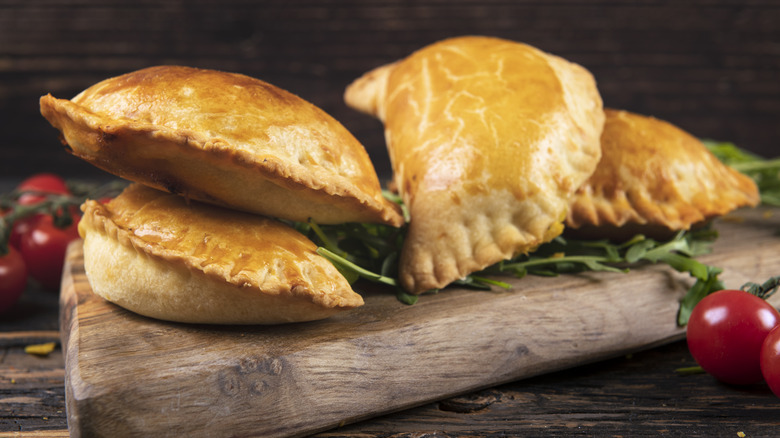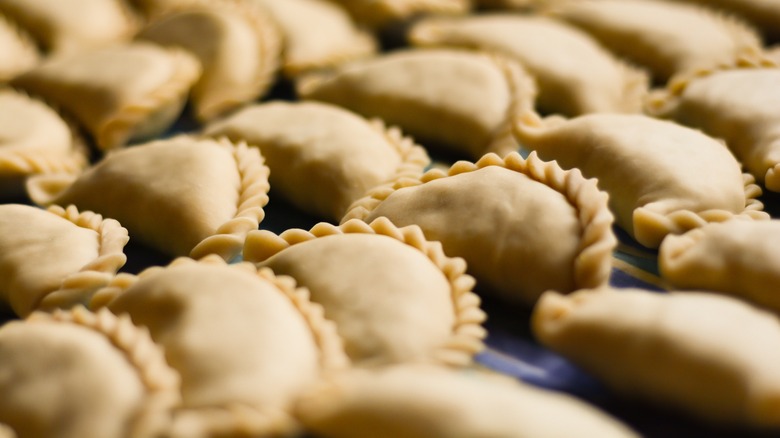What Makes Empanada And Pie Doughs Different?
Filled pastries are found in a wide variety of food cultures, and the variations in both fillings and doughs are nearly endless. One popular example is the meat or vegetable-filled hand pies known as empanadas. These savory pastries are primarily thought to have originated in Spain and Portugal, with some of the earliest versions of this dish coming from the Catalan region. However, the migratory history of the empanada is vast, and it is also possible that the Spanish were introduced to a version of this hand pie by the Moors in the Middle East. Today, the dish is popular in many South American countries like Argentina, and a wide variety of flavors and fillings can be found in variations from different regions and countries.
While empanadas are a type of hand pie, they're not made with the exact same dough you'd use for an apple pie crust. There are key differences in empanada dough that affect its texture, structure, and flavor. The main difference is that, unlike the flaky and crisp pie dough, dough for empanadas is meant to be tender. A higher fat content in the dough helps to slow gluten formation, contributing to the dough's tenderness. This fattier dough is also easier to work with, making your empanadas easier to stuff.
Tips for tender empanada dough
If you want tasty and tender empanadas, make sure to spend time finding or perfecting the ideal dough recipe. Look for ones that incorporate more fat, whether it's from additional egg yolks, lard, or even just an extra tablespoon or two of butter.
Keep in mind that the reason for adding this extra fat is to create a more tender dough. To achieve that texture, you not only need the extra fat but also must be careful not to over-knead the dough. Kneading dough develops its structure, which comes from the gluten in the flour. The more you work the dough, the more gluten develops. So, keep an eye on the time while combining ingredients, and stop working the dough once it comes together. Don't knead it as you would for a loaf of sourdough. Allowing the dough to rest for a while before forming the empanadas lets the gluten relax and can be helpful in creating the perfect hand pies.

